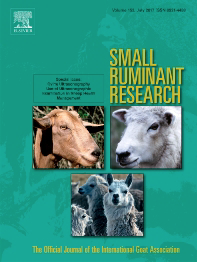 This study compared indigenous Mongol and Mongol-Barga cross-bred sheep.
This study compared indigenous Mongol and Mongol-Barga cross-bred sheep.
Highlights
•Cross-bred individuals have higher live weight and lower winter weight loss.
•GHG emission intensity of the two flock types is similar.
•Management practices also influence live weight gain, weight loss and GHG intensity.
•Climate-smart breeding programs should also aim to improve management practices.
Abstract
Climate-smart agriculture aims to improve food security by increasing productivity and producer incomes, strengthening resilience to climate change, and reducing greenhouse gas (GHG) emissions. For the livestock sector, improved genetics is often identified as a climate-smart option. While there is evidence in commercial systems that improved genetics is effective, extensive livestock systems in marginal environments have received less attention. This study in Mongolia compares flocks of two indigenous breeds: flocks of pure Mongol breed and flocks of Mongol-Barga breed crosses. It finds that cross-breeding can increase productivity (measured by live weight of animals) and improve adaptation to winter cold (measured by reductions in weight loss during winter-spring), while not increasing the intensity of GHG emissions (measured as kg CO2e emitted per kg live weight marketed) (p < 0.05). The effects of cross-breeding on GHG emissions are strongly dependent on the structure of flocks and off-take. Productivity and winter adaptation are significantly improved for the cross-bred flocks compared to pure Mongol flocks (p < 0.05), but management practices also have a significant impact. Programs to promote climate-smart practices in extensive livestock systems should adopt an integrated approach combining improved animal management and marketing with breeding activities, rather than promoting single practices, such as cross-breeding with indigenous breeds.